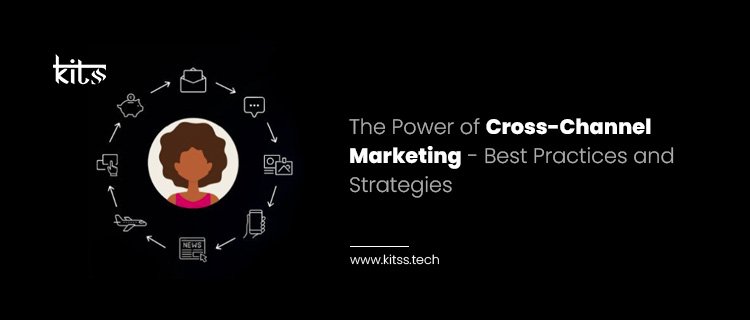You might have noticed something as a digital marketer. You’re doing everything right – crafting compelling content, fine-tuning your SEO, and running successful campaigns, yet something seems off. You’re not getting the engagement or sales you predicted. It’s frustrating and confusing, even with doing everything right.
But here’s the deal. Your customers are on multiple platforms today, from Facebook and Instagram to email and your website. They are scrolling through feeds while watching TV and browsing your emails on their commute. Just being active on multiple channels doesn’t cut it anymore. The real challenge is integrating your efforts across these channels to create a seamless experience for your audience – a major hiccup for many in the digital marketing race.
In this blog, we will discuss Cross-Channel Marketing, a powerful strategy to connect your marketing efforts across various platforms effectively. In 2023 and beyond, mastering this strategy could be the game-changer your marketing plan needs.
What is Cross-Channel Marketing?

Cross-channel marketing is all about creating a unified experience for your customers across multiple platforms they use. Imagine you’re at a party having a single conversation but in different rooms. You want your conversation to be continuous and in tune with the party’s vibe, right? That’s exactly what this strategy does for your marketing. Instead of isolated efforts on email, social media, your website, etc., cross-channel marketing ties all these together.
So, no matter where your customers interact with your brand – whether it’s an Instagram ad, an email newsletter, or your website – they encounter a consistent message. Integrating these channels under the umbrella of digital marketing makes the customer journey smoother and the experience more personal.
How can Cross-Channel Marketing Help your Digital Marketing Strategy?
Cross-channel marketing can elevate your digital marketing strategy to new heights. Here’s why:
Enhanced Customer Understanding
One of the key benefits of cross-channel marketing is a more profound understanding of your customer. Interacting with customers across various platforms gives you a holistic view of their preferences, online activity, and buying behavior – crucial for personalized marketing.
Consistent Brand Message
Consistently presenting your brand across channels solidifies your brand image and increases recognition. Irrespective of where they encounter your message—be it via email, social media, your website or elsewhere—customers can easily associate it with your brand.
Improved Customer Engagement
Cross-channel marketing allows you to reach customers where they prefer to engage. This preference-driven marketing can greatly increase engagement rates, making your marketing efforts more effective and rewarding.
Boost Conversion Rates
When customers receive a seamless experience and consistent messaging across channels, they’re more likely to convert. Cross-channel marketing takes your customers through a frictionless journey from brand awareness to purchase, increasing conversion rates.
Optimized Marketing Efforts
Cross-channel marketing enables you to track and analyze how your customers interact with your brand across different channels. This data can help optimize your marketing efforts, enabling you to focus more on channels that deliver the best return on investment.
Elevated Customer Experience
Above all, cross-channel marketing enhances the customer experience. A consistent, personalized experience across platforms can make your customers feel valued. This positively impacts their relationship with your brand, fostering brand loyalty.
Explore the Fundamentals For Remarkable Results
Let’s delve into practical steps to implement cross-channel marketing and put some real-world examples into perspective.
Identify Your Key Channels
Start by pinpointing the channels your target audience frequent the most, such as social media platforms, search engines, or email.
For example, beauty brands often engage their audience on Instagram and YouTube due to the visual nature of their products and the popularity of these platforms among users.
Understand Your Audience
Gather data about your audience’s behaviors, preferences, and pain points by analyzing your existing channels. This insight can help you create personalized content tailored to your customers.
As an example, Nike offers individualized fitness recommendations based on user data gathered through its mobile app and website.
Establish Consistent Messaging
Ensure your brand’s tone, visuals, and message are consistent across all channels. This consistency reinforces brand recognition and trust.
Warby Parker, a popular eyewear company, maintains consistent imagery, style, and messaging across Instagram, YouTube, and emails, making their brand instantly recognizable.
Coordinate Your Content
Plan your content across channels to complement each other. For instance, promote your blog articles through email and social media, or use Google Ads to amplify your organic search efforts.
Airbnb, a home-sharing giant, successfully combines their email campaigns and social media advertising for destination-specific offers.
Automate and Optimize
Utilize automation tools to manage and analyze your cross-channel marketing efforts. Platforms like HubSpot or Mailchimp offer solutions to help you manage your campaigns and optimize their performance based on gathered data.
For example, a clothing store could use automation to send personalized product recommendations via email based on customers’ browsing habits.
Measure and Improve
Track your campaigns’ performance and analyze the data to continuously refine your cross-channel marketing strategies. By gauging the effectiveness of each channel and initiative, you can concentrate on what brings the most value to your business.
For instance, if Facebook ads provide significant ROI, dedicate more resources to this channel to maximize results.
Final Thoughts
As we move further into changing times, harnessing the power of cross-channel marketing will be instrumental in creating a personalized, seamless brand journey for your customers. Embracing this strategy can improve your brand recognition, engagement, and conversion rates, ultimately solidifying your place in the dynamic digital marketing landscape.
In the words of the marketing wizard Seth Godin, “Marketing is no longer about the stuff you make, but about the stories you tell.” Let cross-channel marketing be your storyteller and bind together a consistent narrative for your brand.


